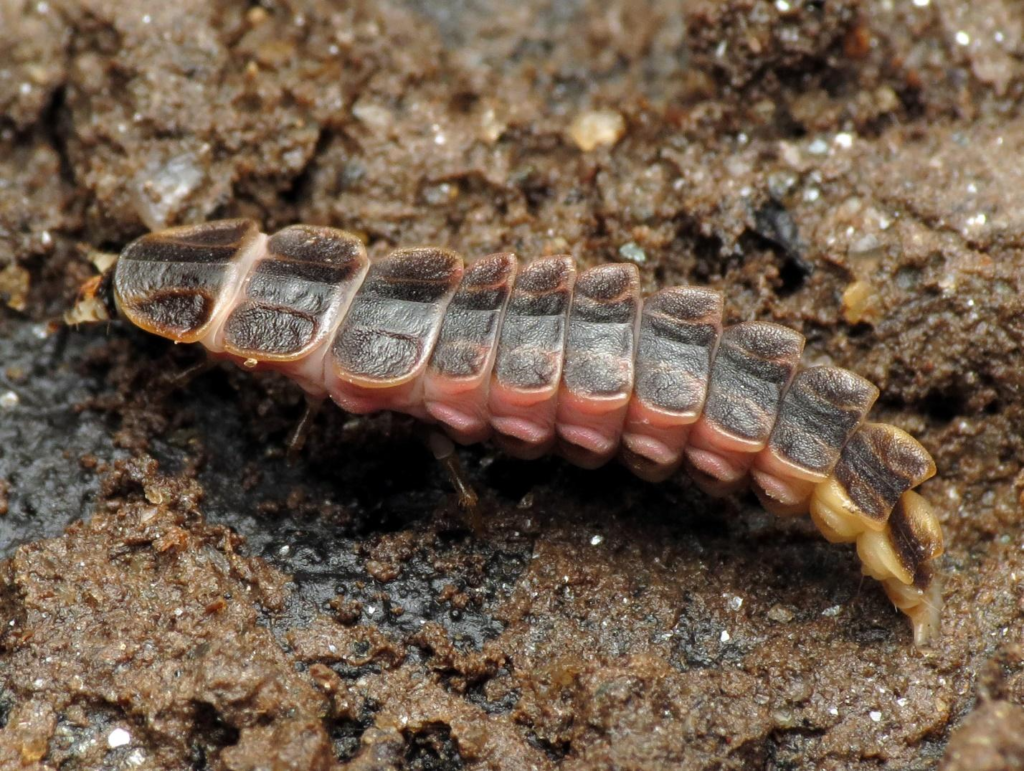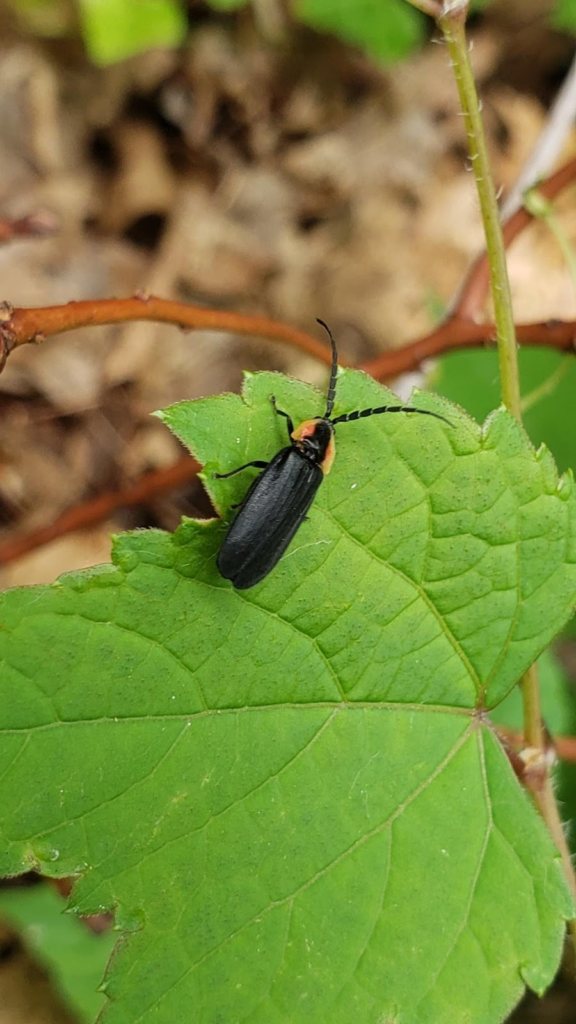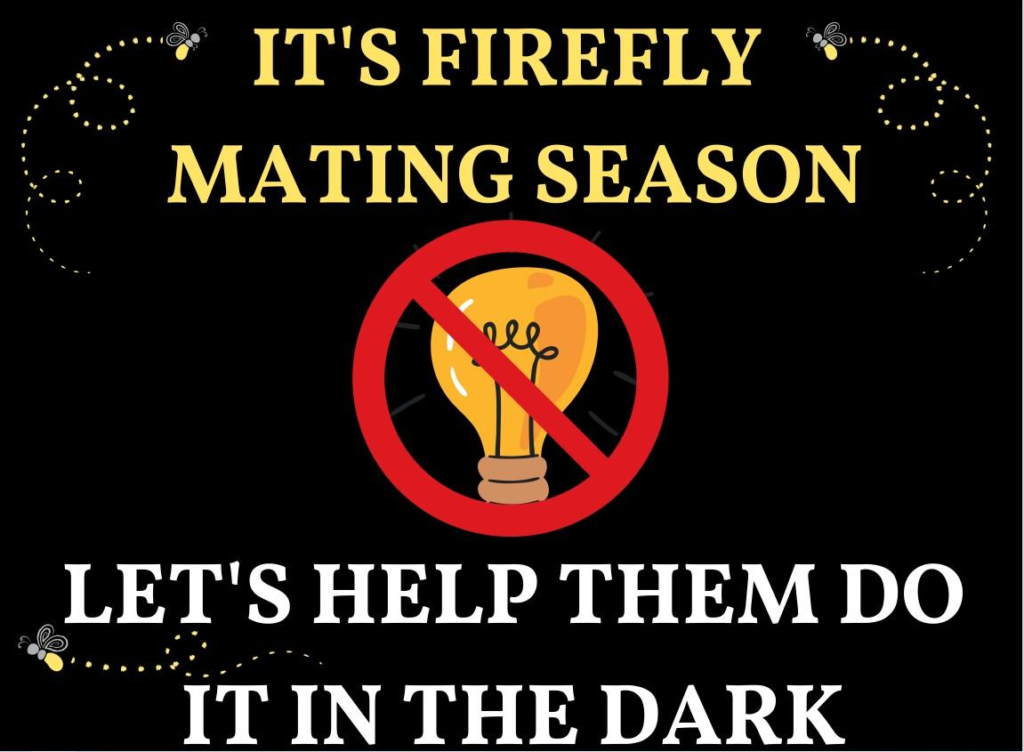By Margaret Carreiro, Ph.D. Biology
OK, everybody! Raise your hand if you do NOT like fireflies…..I’m waiting….. I daresay I don’t see any hands raised. That’s because who doesn’t like a firefly? They are the stuff of magical summer nights and delightful childhood memories of catching them out of the air with or without our parents or grandparents standing nearby wistfully remembering doing the same when they were little. So, of course, we adore fireflies! Who wouldn’t?
What exactly are these little creatures, also known as lightning bugs? And why do they glow at night? First off, they are neither flies nor true bugs. They are beetles with a difference- they have an organ in their rear abdomen called a “lantern” where the special protein (luciferin) and enzyme (luciferase) needed to turn chemical energy into light energy reside. This process is called bioluminescence. Males have bigger lanterns than females (Figures! LOL) and both control their flashing sequence by letting more oxygen (light on) or less oxygen (light off) into their lanterns.
But they were not always the adults we admire by night. They started life off as eggs that hatch into larvae, which, get this, live as predatory carnivores, eating slugs, snails, and small insects as part of the decomposer food web in dead leaves and soil. Firefly larvae are the tigers in our gardens! In fact, fireflies spend most of their lives as larvae in the soil- from a few months to several years depending on the species. Then they become pupae for a short time before transforming into the adults we are familiar with. As you might imagine, adults are very focused on one thing- mating! Individual adults live only a few days to a few weeks. Some species eat nothing and may not even have mouths! Others are omnivores, eating pollen, other plant material or invertebrates in their environment. A few species mate during the day, but most species mate at night, blinking away in varied, species-specific Morse Code-like patterns. These latter nighttime blinkers are the dominant kinds east of the Mississippi River.

Photo 1. Firefly larva from Fort Dupont Park, Washington D.C. Photo credit: Katja Schultz. Courtesy: Xerces Society. Firefly larvae are predators on other invertebrates in soil. But they are also eaten by other animals. The abdomens of many larvae blink and glow similarly to adults. It is thought this signals to potential predators of fireflies that they are distasteful.
But did you know that fireflies are struggling to survive in our urban and suburban world where both pavement and lawns dominate? In many places, their lanterns have gone out for good and increasingly fewer people will be able to share with their children and grandchildren the experience of balmy summer nights filled with their meandering sparks of light. When I moved to Louisville 22 years ago, I came from cities further east where fireflies were long gone. So I was thrilled to see them so abundant in my neighborhood. But since then, I have seen their numbers diminish here, a fact that is both sad in itself and disturbing because firefly decline is a warning sign that our yards have become inhospitable to a host of other insects too, like wild bees and butterflies needed to pollinate many of our flowering plants, and caterpillars needed to feed birds.

Photo 2. Photinus pyralis, the Common Eastern Firefly, also called the Big Dipper Firefly because of the J-shaped glow they leave behind as they patrol for females. Females are sedentary. Males flash every 6 seconds and wait for a female to flash back after a second or two. Females recognize males of their species by the color of their bioluminescent flash and pattern of flashing and choose the best males by the duration and intensity of their flash. These fireflies do not eat as adults. Of the approximate 165 firefly species known so far in the US and Canada, this is among the most numerous and commonly found. Photo by Margaret Carreiro taken in her Louisville garden.

Photo 3. The Black Firefly, Lucidota atra. Also called Woodland Lucy. Unike its “night owl” cousins, this firefly is a “morning person” that flies during the day. Therefore, males find females using their large antennae to sense female pheromones in their environment. They prefer open woodlands and are often found on trees. Photo by Margaret Carreiro in along a road in Hayfield-Dundee area of Louisville. This species has also been observed in her Louisville garden.
So what can we do to keep their numbers as high as we can in our residential areas where natural habitat destruction has already occurred? Are there ways we can enjoy our yards but also live together with fireflies? This wouldn’t be hard actually and here is how we can work together to save our fireflies.
- Turn outdoor lights off when not needed during firefly mating season. In Louisville that typically occurs from mid-June to the end of July.
Why? Because all those flashes are sex talk between male and female fireflies. For many species, females wait patiently on or near the ground watching out for the specific flash pattern of males of her kind. Different species of fireflies co-exist in the same habitat like your yard, so being able to distinguish males of her own species is the first thing a female must do. Secondly, however, she wants to pick out the male she thinks is the best to mate with, and that depends on her being able to pick out far subtler flash cues that indicate the most fit male. Being able to do this is critical to the survival of her children and the future of fireflies in our area. But all the lights we leave on indoors that leak out through unshaded windows, and more importantly the ones we leave on outdoors during the night, prevent the female from picking the best males. Once she has chosen, she coyly blinks back from low on the ground to let him know she is interested in his visit, or for some species, she boldly flies up to greet him. After mating and female egg laying have occurred, the adults die and the life cycle of the next generation starts anew.
How can we help them to mate more effectively then? By turning out lights indoors and outdoors when we are not using them. As for outdoor lights, we can also install trip lights that come on for a few minutes so we can see when we need to. For people concerned about robberies, motion detector lights would startle a robber and stay on for as long as that person is out there, alerting you and neighbors of outdoor movement. Turning off outdoor lights at night when not needed would also help many other nocturnal insects, like moths and birds, all year.
- Do not use insecticides in your yard. As you now know, fireflies live most of their lives as carnivorous larvae in the soil. Insecticides, particularly the ones applied regularly to control mosquitoes in yards, kill all insects, including fireflies in all stages of their life cycle, and many other beneficial insects, like bumblebees and butterflies (including their caterpillars). The insecticide spray lands on shrubs, small trees, flowering plants, grass and finally on the soil where many insects live and/or create nests. Bumblebees, for instance, nest belowground, as do 70% of native bees. Please think twice before resorting to insecticides, especially those that are sprayed diffusely over a large area of your yard. Please consider other methods of mosquito control, which involves making sure there are no spots holding water for longer than 4 days- like clogged house gutters, buckets, kiddie pools etc. Clean, remove, or empty them so mosquitoes don’t lay eggs in them. Some mosquito species develop from egg to larvae to adult in just 4 days in hot summer weather in water-holding containers.
- Leave the leaves in your yard. As you have learned, firefly larvae are predators near the top of the soil food chain. They eat other soil invertebrates, most of which either break down dead leaves for food or eat the bacteria and fungi decomposing dead leaves. To support the decomposer food web in your garden, feed the soil with natural organic matter. In our area that comes from tree and shrub leaves that fall in the autumn. These leaves are nature’s mulch and fertilizer all rolled into one and they are FREE! Consider using some or all of your tree leaves in your garden to feed the soil by raking them up into garden areas or under shrubs over winter to a depth no higher than about 4 to 6 inches. Doing so will support not only firefly larvae but worms and other insects. Ground-feeding birds including Brown Thrashers, Robins, White-throated Sparrows will also appreciate eating the insects that thrive in a leaf litter layer in your yard. And many of us gardeners appreciate the old adage, “Feed the soil and you feed the plant” when it comes to growing healthier plants in your garden.

Photo 4. Photuris species are the femme fatales of fireflies. Alluring, isn’t she? Females mimic the response flashes of females of other firefly species and lure males of these other species to their doom. She eats them. This is called aggressive mimicry. Of course, she mates with the males of her species, but I couldn’t find out if she eats them or not. Photo by Margaret Carreiro taken in her Louisville garden.
Fireflies are a part of our local biological heritage in Louisville that we can be proud of conserving. As species go extinct, the variety of people’s experiences with nature also die, creating a shifting baseline of nature awareness where our children and theirs won’t know what they have missed and begin to care less about nature conservation. After all, we only conserve what we learn to love. I doubt we would want to leave that as our legacy to the generations after us in our city, not if we can help it. Species impoverishment really does impoverish us. A little knowledge and mindfulness can go a long way to our sharing the land in our residential and work places with more of the species that were here before the rise of our cities.
I hope by reading this and learning more about fireflies you can see how easy it would be to help save them from local extinction. So, let’s save our fireflies! We can do this! We can do this together!
Learn more by watching my latest video—featuring Margaret Carreiro—posted at https://www.louisvillecan.org/videos
Scroll down until you see. SAVING FIREFLIES.
Learn more about fireflies in general and current conservation efforts in North America by going to the Xerces Society’s firefly page: https://xerces.org/endangered-species/fireflies
To learn more about the Lights Out Program and Network and how you can control or modify outdoor lighting to be more benign for birds and other species, go here:
https://www.audubon.org/lights-out-program
WOULD YOU LIKE THIS SIGN FOR YOUR YARD?

We will soon have 18 x 24-inch Firefly Yard Signs available! You can set these up in June and July to help remind folks that Fireflies need our help. There will be a QR Code on it on the right side leading folks who see your sign to this web page for more information about fireflies and how we can help save them. Stay Tuned for information on how you can pick up a sign for your yard.
We’d like to thank Jon Buckley who with his excellent CANVA skills made this firefly sign a reality.
